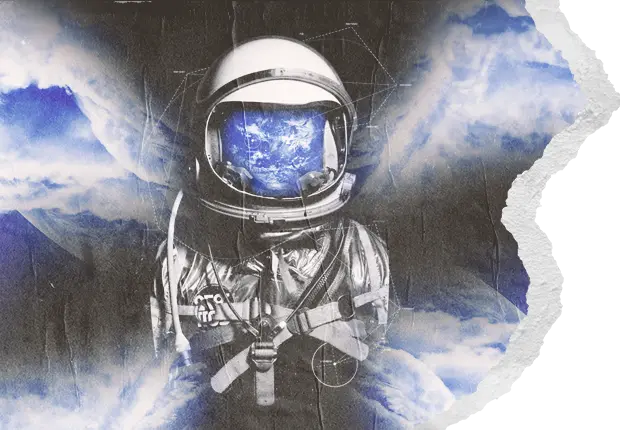Our Place in the Stars
“It’s like we’ve forgotten who we are: explorers, pioneers, not caretakers…we used to look up in the sky and wonder at our place in the stars. Now, we just look down and worry about our place in the dirt.”
In so many ways, Interstellar feels more relevant than it ever did ten years ago. It seems as if Christopher Nolan understood the direction our decadent culture was leading and extrapolated it out into his fictional version of Earth. The fact that his masterpiece now appears much less like speculative fiction says it all. Truthfully, while the world has certainly changed dramatically from 2014 to today, watching Interstellar again, ten years since its release, since the day I drove myself to the theater, freshly laminated driver’s license in my pocket, I tend to see the currents of change more clearly through reflecting on how I have changed in tandem. That day, 16-year-old me had his mind blown by the visual spectacle. Wide-eyed, I watched and wondered at the science that grounded Nolan’s high flying fiction.
Ten years later, I sat down in the theater to once again be dazzled by the vistas of alien ice planets and the white-knuckled piloting of the protagonist, Coop. This time however, what dazzled me was not the sci-fi marvels but Nolan’s depiction of a broken man longing for adventure, a chance for glory in a world of pure subsistence. Coop, a retired NASA pilot and engineer, doesn’t farm because he loves it, or because he values connection with the earth. No, he farms because, in the words of his children’s school principal, “the world doesn’t need more engineers. [The world] didn’t run out of television screens and planes. [It] ran out of food.” Coop’s desire for adventure is outmoded in the minds of a people focused only on making it to tomorrow. Men with potential like Coop are discouraged from “looking up in the sky” and instead have their faces mashed into the dirt. Higher aims have been sublimated by the collective.
Coop is old enough to remember a time when this wasn’t the case. He was once NASA’s best test pilot, a Chuck Yeager-like figure, who, even so many years later, remains the only pilot capable enough to fly the spacecraft of the interstellar expedition. The movie opens with Coop’s last flight, the flight that grounded him for good after a traumatic crash. This crash haunts Coop’s dreams; the specter of a job unfinished, worlds unexplored. What bothers Coop most is not the trauma of crashing a ship traveling at 300+ mph. No, what bothers Coop is that he let up. He didn’t trust his gut and push forward at full speed. Watching this first act, in the dark environs of the crowded IMAX theater, I felt that I was seeing Coop for the first time. I felt his longing and the regrets that he harbored. They were in me as well.
Despite the physical and spiritual blows Coop has endured, he is not totally defeated. When a gravitational anomaly in his daughter’s bedroom spells out coordinates for a mysterious location in the mountains, he seizes on this seemingly divine opportunity for adventure. The coordinates lead him to a secret NASA installation where he is provided with his chance to complete the mission he had been training for, a decision that may determine the fate of humanity: pilot the spacecraft of the expeditionary mission in search of new planets for humanity to inhabit, or remain on Earth and farm, raising his children in a barren wasteland. His answer is an unwavering yes. Leaving his children on Earth is likely the most difficult thing he can do, but he understands that a life without any hope of a future is no life at all.
Coop’s daughter, Murph, struggles to understand how Coop’s leaving can be a selfless act of love. She views it only as an abandonment by the one man who was supposed to protect and provide for her. On my first viewing, I too felt that abandonment with Murph. How could Coop do this? Now however, I see that Coop really had no choice. He could not bear to maintain the lie that the world was pushing on him and his children: the lie that said, “We must accept our lot and bear the decay. Exceptional feats are too costly to the safety of the many.” This is the lie that Murph was told in school, as her teacher explained with confidence that the moon landing was faked to bankrupt the Soviet Union. There was nothing Coop could say that would dispel the ever-present nihilism. He had to show his children and the world that greatness was indeed possible and necessary for the survival of humanity, and that all it took was men like himself to take the sword from the stone to call the world back from its deathly slumber.
Murph, however, was not convinced. She continued to hold the resentment for her father even as she began her work with Dr. Brandt, the head scientist at NASA, and her new father figure in Coop’s absence. But Dr. Brandt was the biggest liar of them all. He convinced Murph that they could find a way to launch an “ark” into space to harbor the human race, but only if he could solve the problem of gravity and the challenges of launching such a large craft. Murph worked tirelessly to help him research the theoretical physics that would enable their escape. It was only on his deathbed that Dr. Brandt would reveal that he had been misleading her all along, and that there truly was no way to overcome the problem of gravity—that, in Murph’s words, “We’re all doomed”.
Brandt is the most evil of all, for he knows the truth and yet he perpetuates the lie. Coop stands out and refutes this evil. He leaves because his overwhelming love for his daughter demands that he pursue his destiny and reveal to her the truth through his actions.
So Coop proceeds on his journey through space with a full sense of the importance their journey holds. One of the best scenes in the movie follows this decision, as Rom, one of the other scientists on the mission, sits on his bunk and agonizes over the idea of a metal shell being all there is that separates them from the void of space. Coop sits with him and says, “You know some of the finest solo yachtsmen in the world don’t know how to swim? They don’t know how. If they go overboard (whistles) they’re done. We’re explorers, Rom. This is our boat.” Cut to a beautiful shot of their ship racing by the rings of Saturn with the sound of thunder and crickets singing in the rain playing behind it. This scene so perfectly captures Coop’s essence, his arrogant will contrasted with the vast and uncaring void of nature. This is the paradox of the explorer. He fully understands and accepts nature’s cruelty, yet sets out regardless. He feels the pull of destiny, the possibility of victory, so acutely that to resist his fate is not only cowardice but opposed to his being. Coop comes to symbolize this spirit of reckless overcoming, an aspirational figure in a culture that lacks any will to truly live.
In the final act, Nolan undermines the picture of Coop that he so meticulously laid out. Nolan presents the idea that love is a concrete, knowable force of the universe, outside time and space: a fifth dimension. It is love for his children that has driven Coop to action, and it is love that guides him into a tesseract beyond the event horizon of the black hole, Gargantua. Inside the tesseract, Coop is able to communicate with his daughter, now a scientist at NASA, and transmit quantum data that will allow humanity to send the massive “ark” to the stars.
When I first saw Interstellar, ten years ago, I was enamored with Nolan’s cleverness. He had found an intersection between science and an irrational feeling, love, and built a rational framework around it. Love was just another knowable force of the universe. Now I see the dubious nature of this materialistic outlook. According to Nolan, Coop is not an aspirational figure driven by a spirit of adventure but just another entry in a spreadsheet with the proper quantity of “love” to affect the best outcome for humanity. If only we can maximize the “love” in the world, all would turn out well. Coop is but a plaything of science, a unit of “love” to be applied. I’ve come to refute this view of Coop and see him for what he is, a unique man of overwhelming spirit. A man whose actions are in no way rational but driven by something deeper.
As I reflect on how my view of Interstellar has changed, it becomes clear the growth I have undergone and the affect our own culture’s decline has had on my view of the “scientific” understanding of man. To my younger self, the idea that science can drive men to greatness was inspirational. It drove me to becoming an engineer myself to aid in the mission of elevating humanity. Now, as I leave the IMAX, smiling from the sheer enjoyment of Nolan’s visual masterpiece, I find Interstellar less inspirational in that way and more aspirational. Coop shows a vision not of something to be done but something to become, something to aim towards. He is a man that embraces that unknowable spirit that pushes him towards something greater than himself. His journey is unique to him and the will that drives him is not some scientific force to be studied and replicated. It is a piece of himself that he musters the courage to express, despite the fear and the loss his decisions require. Coop is a hero, a man of action. He embodies a state of being that I too aim to embody. If the world were filled with such men, maybe the feats of engineering and daring depicted could be more easily attained. Certainly the decay of the world would be staved off by such men. To aim for this, and to bring it into being, even for those whose will drives them towards lesser goals—that’s what love really is.
































